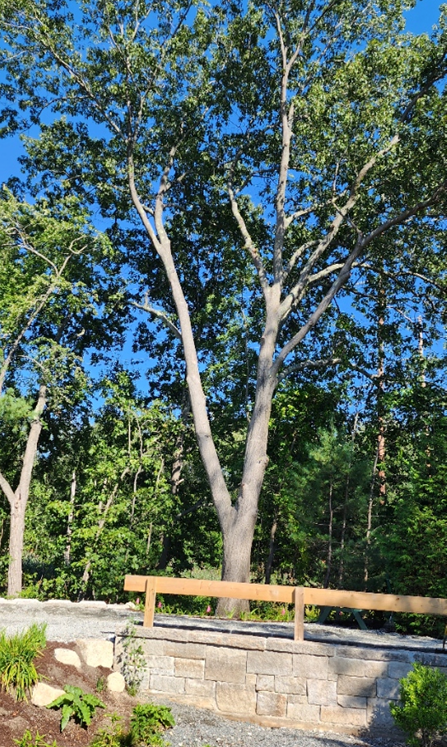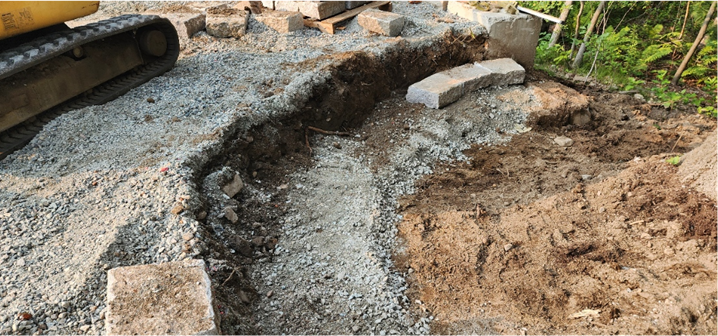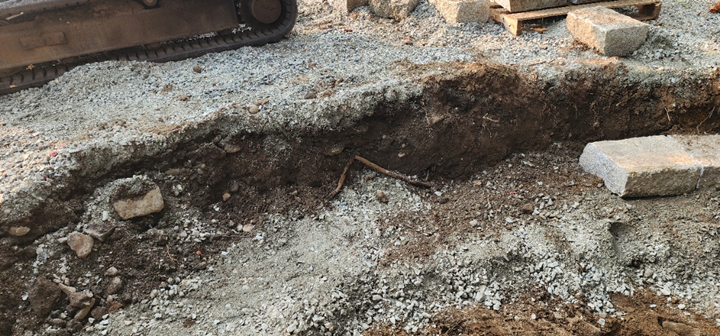A stately Northern White Oak stands at the northeast corner of our granite superstore Wilmington, MA complex. A wall in the foreground which addresses retention issues is adorned by a veneer of our “chopped material” Grade changes around the perimeter of the great oak required a different treatment of retention.

A radius was established, then the area around the tree excavated. How large a tree well (diameter) and how deep do you dig? … are two fair questions to ask.


While Botanists and Arborists mostly agree that the diameter of a properly sized well around a mature tree should approximate the diameter of the tree’s crown. The reality is that most often this protocol is not practical for a number of reasons – so you do what you can.
Once you decide upon the diameter that will work, excavate carefully around the trunk.
The prevailing rule-of-thumb is to excavate around the tree down to “virgin soil” level – just above the surface roots to ensure for continued good health for the tree.

In this instance, topography and grades around the tree dictated a “half-circle” well. After excavating, base material was added around the perimeter and compacted. Establishing the general grade of the periphery is essential to determine the height (number of courses) of the tree well wall. Sometimes it is necessary to have a course “disappear” due to a changing periphery grade, so you will have to plan for this after laying a few pieces out.

A grouping of various length curbing cut with trapezoidal shapes will be necessary for this “tight radius” wall project. Once we know the scope of your project we can cut them for you.

Always order more than you think you will need – 20% extra is a good rule of thumb. To start it may be helpful to lay a few out on the periphery to get “the feel” of the project.

In our tree well wall, the depth of the grade at the far end calls for a 3 course (20 – 24” prox.) in height, which diminishes halfway around the circle, hence the first course must “disappear,” as the grade changes to a 2 course well at the end in the foreground.

Since our slope curb pieces are so dimensional, “leveling” will be minimal, but using a level is important for the best results.


Using a “braided wire” to hoist the pieces into position for sizing and setting is helpful. The granite can be set and not disturbed as the wire is pulled out with ease.



The “trapezoidal shapes” of the granite curbing allows for a tighter jointed “finished” look to a still rustic, natural wall.”

Adding filter fabric around the base may sometimes be recommended … especially if a perimeter garden is planned.

A well designed and constructed slope granite wall well provide lasting beauty and function for any landscape.

